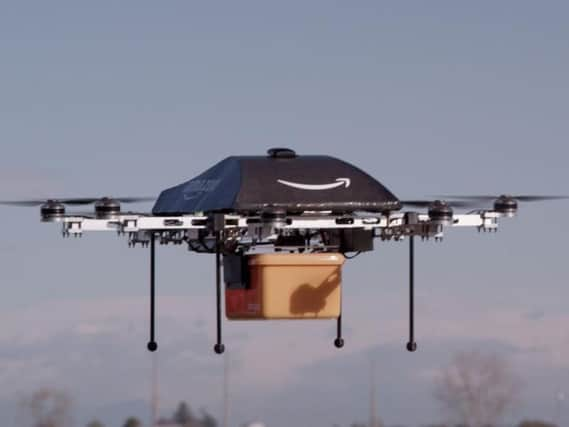Drones set to deliver takeaway food to your door by 2024


A report from the NPD Group said that drones are more sustainable than some other forms of transport and could work just as well in rural locations as cities - while the number of people opting for takeaway food for breakfast and lunch is also on the rise.
The report found that the delivery of food orders in the UK is the industry’s fastest-growing channel and its extensive use of technology means it is also the most innovative. Meanwhile, the number of takeaway deliveries of breakfast is up by 86 per cent and lunch by 99 per cent since 2015, it added.
Advertisement
Hide AdAdvertisement
Hide AdThere were 755 million delivery visits in the year to December 2018, an increase of 210 million or 39 per cent compared to three years earlier. In contrast, total visit figures for the British out-of-home or eat-out foodservice industry grew just two per cent between 2015 and 2018, peaking at 11.35 billion visits in 2017 and declining by -0.5 per cent in 2018, a loss of 60 million visits.
NPD said delivery increased its share of Britain’s foodservice industry from five per cent of visits in 2015 to seven per cent in 2018 and could be worth £6.3bn by 2021.
Drone delivery has been trialled in some countries by companies such as Amazon, but has so far not been used in food delivery. Takeaway delivery firm UberEats has previously hinted at creating a drone delivery service in the US, but said the project was in early stages.
Dominic Allport, insights director of foodservice at the NPD Group, said: “There’s much more innovation to come from the delivery channel. Consumers will love the novelty value of receiving their food order via drones. As soon as British foodservice operators get a viable and authorized drone delivery platform, they’ll offer it to the public for appropriate foods in selected markets.”
Meanwhile, a separate report published by Kantar found that diners are increasingly trading down from full service restaurants to faster, flexible options. The study said that there were almost five million fewer trips to full service restaurants in the most recent 12 weeks, with diners reluctant to splash out on premium meals. However, cafes and coffee shops have enjoyed growth of eight per cent over the same period, while out of home coffee sales grew by fiver per cent, sales of croissants by seven per cent, and savoury pastries up by nine per cent in the past year.
Simon Quirk, consumer specialist at Kantar, said: “Experience-based dining is now a massive market – every meal needs to be good enough for Instagram at the very least. Full service restaurants are inherently experiential, but even they will need to find new ways to stay ahead in this field. Over the past year, people have increasingly looked to base meals around other recreational activities and with more money being channelled in this direction, full service restaurants have seen sales decline by six per cent.”
With over 60 per cent of delivery visits occurring at dinner, delivery is strongly associated with evening meals, NPD said. However, the report suggests that delivery has ample room to grow at other times of day. Breakfast and lunch combined accounted for one in five delivery visits in 2018, an increase of 74 million, almost doubling in size since 2015. Snacking delivery visits are also growing rapidly, up 67 million since 2015, indicating the increasing appeal of delivery across the day.
He added: “In the past decade, foodservice delivery spend has almost doubled and is especially profitable for restaurants looking to increase business volume. Over the short-term, commission charged by aggregator platforms could impact operator profitability. But the long-term trend for food delivery is growth. The arrival of virtual restaurants, usually run from ‘dark kitchens’ and offering delivery-only brands, will strengthen the wider movement away from retail-based foodservice.”
Advertisement
Hide AdAdvertisement
Hide AdThe report also revealed that around seven in 10 delivery visits are to residential addresses while one in 10 are to work locations. Delivery visits also grew strongly among the 35-plus age group between 2015 and 2018, with visits up 45 per cent, or an additional 63 million.